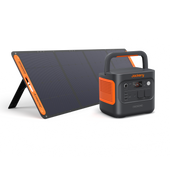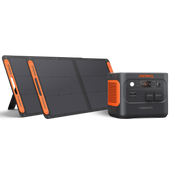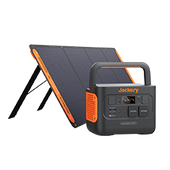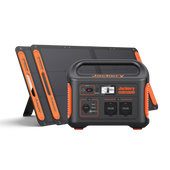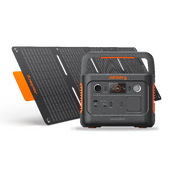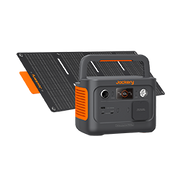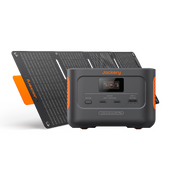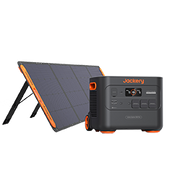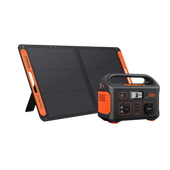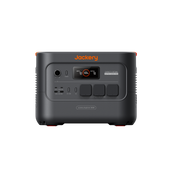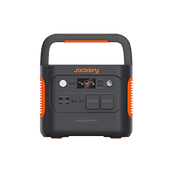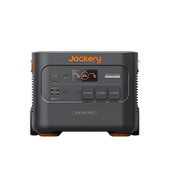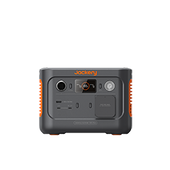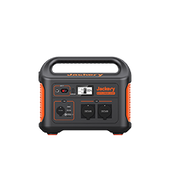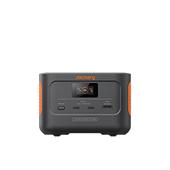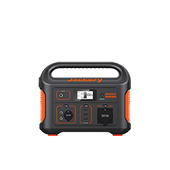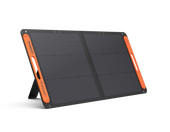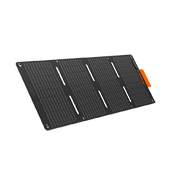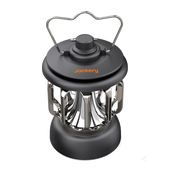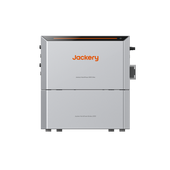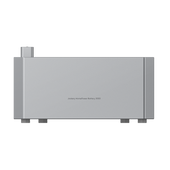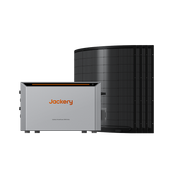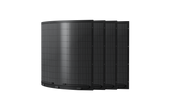Elevate Your Power Needs: Portable Power Stations for EU Travelers - Jackery EU
As technology progresses, the ubiquity of portable electronic devices like smartphones, tablets, and laptops is becoming more pronounced. They offer access to various tools, from communication to entertainment, and are progressively crucial in our day-to-day activities, mainly during travel. As a result, the demand for reliable power sources has also escalated. Battery technology advancements, such as high-capacity Li-ion batteries and fast-charging systems, are continuously developing to support longer device operations. Additionally, portable power solutions like portable power banks, solar-driven portable power stations, and energy harvesting devices are growing in popularity, which aims to ensure device usability on the go.
According to a recent study, the European market for portable power stations is expected to grow by USD 26.42 million at a compound annual growth rate (CAGR) of 5.24% from 2021 to 2026. The report evaluates the post-pandemic impact and provides insights into the market, segmented by source (hybrid and direct) and technology (lithium-ion and sealed lead-acid). The surge in adventure tourism, along with the rising rate of urbanization, contributes meaningfully to the market growth by increasing the demand for these devices among travelers. Moreover, the growing preference for renewable energy systems, with batteries playing a vital role, further fuels the growth and pushes vendors to launch new, efficient, easy-to-transport mobile power stations.

What Is A Portable Power Station?
Advantages of a Portable Power Station
1. Multi-device Compatibility
2. Higher Capacity
3. Eco-friendly Energy Source
4. Greater Durability
5. Emergency Power Supply

Jackery Solar Generator 500 for EU Travelers
- European Sockets: As mentioned above, the Jackery Solar Generator 500 is equipped with European sockets, which is convenient for EU travelers. No need for additional adapters; simply plug your devices in and start charging.
- Portable and Compact: The generator is lightweight and compact, which is ideal for travelers. It can easily fit into a backpack or a car boot, thus providing power on the go.
- Clean, Quiet Power: Unlike traditional generators, the Jackery Solar Generator 500 is clean and quiet, which is undoubtedly helpful for campsites, RVs, or any outdoor environment where noise or emissions may be a concern.
- Versatility: With three USB-A ports, an AC outlet, two DC outlets, and a 12V car output, it can cater to various device charging needs simultaneously. Jackery may serve a wide range of electronic devices, including mobile phones, laptops, and even tiny home appliances.
- 3-Way Recharge: It can be recharged in three ways – AC Adapter, Car Adapter, and Solar Panel, which provides flexibility to EU travelers with varying access to power sources.
- Durable and Safe: The Jackery Solar Generator 500 is made from durable materials and is temperature resistant, which ensures safety and longevity even in harsh weather conditions. So, it seems to be a reliable power companion for your European adventures.

Jackery Explorer 500 Portable Power Station
Common Challenges Faced by EU Travelers
Incompatible Power Sockets
A common challenge for EU travelers is the presence of different power socket types across Europe. For instance, countries like France, Belgium, and Poland primarily use Type E sockets. In contrast, the UK uses Type G, and Italy uses Type L. It poses an issue for a traveler from Spain (which predominantly uses Type F sockets) visiting these countries. They must remember to carry a variety of travel adapters or a universal adapter to ensure their devices can be charged.
Likewise, the design of these adapters is fundamental. Poorly designed or cheap adapters may not fit all sockets, which prompts loose connections and intermittent charging. It can lead to long charging times or devices not charging at all. Also, it can cause a major inconvenience when the traveler relies on devices for navigation, communication, or entertainment.
Voltage and Frequency Differences
Voltage and frequency vary across the EU, with most countries using 220-230V at 50Hz. Nevertheless, some regions and devices might operate at different voltages or frequencies. For example, a German traveler with a device premeditated for 230V, 50Hz power supply could face problems if they plug into a lowered-value voltage source.
A low voltage might not charge a device properly or take much longer than expected. Conversely, a high voltage can damage the device's power supply or battery. Thus, travelers should ensure their devices are compatible with the voltage and frequency in the countries they're visiting.
Unavailability of Charging Stations
Public charging stations are only uniformly available across some EU countries. Urban areas and airports usually have good access, but finding charging spots can be difficult once a traveler leaves these areas. E.g., a rural Greece or Romanian traveler may struggle to find charging stations.
Without question, this challenge necessitates carrying portable power stations or portable AC power banks. However, if purchased from an unreliable supplier, they also need to be charged eventually, and their weight adds to the luggage. The unavailability of charging points can be a major inconvenience for those relying on electronic devices for travel assistance or work.
Wi-Fi Only Devices
Some devices, like specific models of tablets or e-readers, rely profoundly on Wi-Fi for various functions, including software updates, which might be necessary while traveling. Nonetheless, many public charging stations in the EU don't offer Wi-Fi services.
This lack of Wi-Fi at charging stations can lead to the inability to download necessary data, maps, or books for the journey ahead. A potential workaround could be downloading necessary content when Wi-Fi is available. But it requires planning and may not be feasible in all situations.
Device Overload
EU Travelers frequently carry multiple devices like smartphones, laptops, tablets, and cameras. Charging all these devices can lead to overloading, especially if using a single adapter or multi-plug extension. Suppose the total power drawn exceeds the adapter's capability. It can lead to failure or even pose a fire risk in that situation.
This issue becomes particularly challenging when staying in accommodations with limited power outlets, which forces travelers to charge numerous devices from a single source. It's always wise to spread the load, charging devices at different times or using separate outlets where available. Balancing multiple devices' charging requirements is a puzzle many travelers have to solve.

How Portable Power Stations Come Handy!
Portable power stations, such as power banks and solar chargers, are essential for long-distance travel and outdoor adventures since they overcome various device charging challenges. For instance, power banks can store electricity for later use, which addresses the problem of infrequent charging stations, especially in remote locations like rural areas or during camping trips. Solar chargers harness sunlight and provide an eco-friendly power source without traditional outlets.
Apart from that, these portable solutions come with different charging ports compatible with various devices, solving issues linked to socket incompatibility. Travelers can also charge multiple devices simultaneously without overloading a single outlet, as these power solutions are designed to handle multi-device charging. Furthermore, modern portable chargers have voltage regulation and surge protection to ensure safe charging irrespective of regional voltage and frequency differences. Therefore, investing in portable power solutions not only guarantees device accessibility during travel but also mitigates many power-related challenges travelers encounter.
So, power up your outdoor adventures and emergencies with Jackery Solar Generator 500!
Best-selling Jackery Portable Power Station
Hurry up! Sale ends once the timer hits zero

